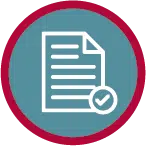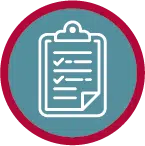- February 16, 2023
- Perspectives
How to Develop an ADA Transition Plan: A Guide to Creating More Inclusive Communities

Brian Shamburger, PE, PTOE
Accessibility Specialist
Citizens with disabilities may encounter accessibility challenges in their day-to-day life, whether it’s not having access to a restroom at an outdoor event, there not being a curb ramp at the end of the sidewalk while crossing the street, or for parents with children with disabilities, that their child is unable to participate in certain activities that aren’t inclusive to children of all abilities.
To address this, municipalities can create more conscientious communities with a clear understanding of the requirements of the Americans with Disabilities Act (ADA). By developing an ADA Transition Plan with the help of a trusted consultant, you can ensure compliance with the ADA and improve the accessibility of your municipality to be inclusive to residents and visitors with disabilities.
What is Required in an ADA Self-Evaluation and Transition Plan?
The ADA is an all-inclusive civil-rights law that mandates equal opportunity for individuals with disabilities and guarantees that they have the same opportunities as everyone else to participate in mainstream American life: to enjoy employment opportunities; purchase goods and services; and participate in state and local government programs and services. To ensure this, Title II of the ADA requires that state and local governments make all programs and services accessible to people with disabilities.
"On behalf of Ambrose, we are incredibly appreciative of all the efforts put forth by Kimley-Horn on this project. This experience has allowed Ambrose and Kimley-Horn the opportunity to execute on future projects for this client."
— Source 2021 U.S. Census Bureau data
The ADA requires a municipality—no matter the size—review all aspects of its programs, services, and activities for compliance, often referred to as a Self-Evaluation and Transition Plan. The Self-Evaluation process requires a clear understanding of the ADA Title II regulations, specifically the program’s access test as applied to existing facilities. The requirements for a Transition Plan, as outlined in 28 C.F.R. section 35.150, only apply to public agencies with 50 or more employees.
To ensure compliance with the ADA, ongoing education and guidance are essential for municipalities and businesses. When conducting the Self-Evaluation process, you should review each department that interacts with the community; boards and commissions; facilities, curb ramps, intersections, and sidewalks; and the municipality’s employment practices. You should further evaluate all programs, services, and activities to include in the Transition Plan.
How to Get Started
Evaluating every program, service, and activity in your community as part of the Self-Evaluation and Transition Plan can be a daunting task, but you can approach the task by getting started and then gradually developing an action plan to evaluate everything. To help you get the ball rolling, we’ve outlined the following eight-step process for achieving ADA compliance.

1. Designate an ADA Coordinator
Designate at least one person to serve as the ADA coordinator. Ensure their experience and education will allow for effective coordination of your municipality’s efforts to comply and carry out responsibilities under the ADA and that they have the authority to create change within the municipality.

2. Provide Public Notice About the ADA Requirements
Municipalities are required to make sure the public knows the rights that are afforded to them under the ADA. You must communicate and get feedback from people with disabilities while developing the Transition Plan.

3. Establish a Grievance Procedure
A grievance procedure outlines how and where a complaint can be filed with your municipality. It also establishes the timeframes in which you will respond, and how the complainant can appeal if they disagree with the outcome. There are numerous benefits of having a grievance procedure in place: promoting consistency; having documentation (in case of litigation); and providing a formal complaints process.

4. Document Your Current State of Compliance
There’s no doubt that every municipality has improved accessibility over the last 30 years—document it. What are you responsible for? What evaluations have been completed? How complete are they? What still needs to be evaluated?

5. Develop Internal Design Standards, Specifications, and Details
The last thing you want to do is design and construct something that’s out of compliance. Therefore, it’s important to establish and review your guidance and standards documents for consistency with current applicable standards. It may even be necessary to develop guidance documents to avoid common construction issues.

6. Develop a Self-Evaluation and Transition Plan
This is where the real work begins. Municipalities must evaluate all programs, services, and activities for compliance with the ADA. This includes everything from after-school programs offered by the Parks and Recreation Department to sidewalks and transit stops. When you identify barriers, you are required to develop a plan to fix them, which includes cost, schedule, and the responsible person or department (i.e., your Transition Plan).

7. Approve a Schedule and Budget to Implement the Transition Plan
Real progress can be made when a municipality makes financial commitments to improving access. Include barrier removal projects as part of your annual budgets, either as stand-alone projects or as part of regularly occurring programs (e.g., street resurfacing projects). This should continue until all barriers are eliminated, which will vary based on the size and resources of your municipality.

8. Monitor Progress
Once you start working on your Transition Plan, keep track of barrier removal projects. The Transition Plan is intended to be a living document, updated regularly to inform both staff and people with disabilities that progress is being made.
Not having an updated and compliant ADA Transition Plan may be impacting people in your community, so now is the time to conduct a Self-Evaluation and prioritize inclusivity and compliance. Kimley-Horn is here to help bridge the gap between the intent of the law and the practices of our clients so that everyone may have equal opportunities to enjoy civic life.
About the Expert

Brian Shamburger, PE, PTOE
Brian brings 30 years of experience in transportation engineering and accessible pedestrian facility design. Over the past 16 years, he has become an expert in the field of accessibility, helping numerous municipalities and Title II agencies across the country perform Self-Evaluations and develop ADA Transition Plans. Each of the plans he has managed has also included extensive staff training on the technical aspects of ADA. Brian has also worked with numerous municipalities and state DOTs across the country to host roundtables on ADA Transition Plan requirements and is a recurring instructor at the National ADA Symposium.
